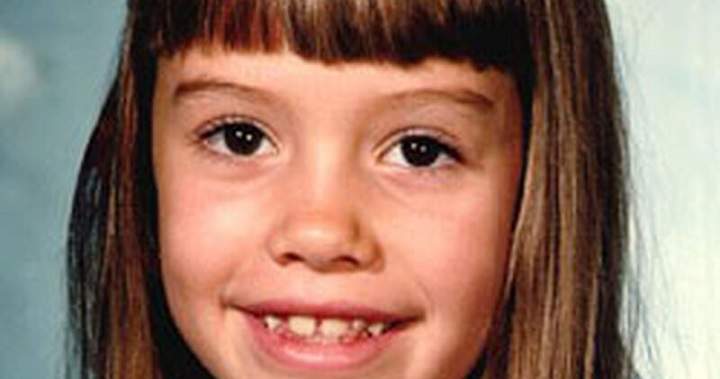I’ve spent the last three weeks reviewing decades-old case files, interview transcripts, and speaking with investigators who’ve dedicated significant portions of their careers to one of Toronto’s most haunting cold cases. The disappearance of Nicole Morin – the 8-year-old girl who vanished from her Etobicoke apartment building on July 30, 1985 – continues to perplex investigators nearly four decades later.
Toronto Police recently renewed their appeal for information, hoping fresh eyes and evolving technology might finally crack this enduring mystery. “Cases like Nicole’s never really close,” Detective Sergeant Madelaine Tretter told me during our interview at 22 Division. “We periodically review the evidence, follow up on new tips, and apply modern investigative techniques that weren’t available in 1985.”
The facts remain tragically simple. Nicole planned to meet a friend in her apartment building’s lobby to go swimming that summer morning. She left her family’s penthouse apartment around 11 a.m., but never arrived at the lobby. Despite one of Canada’s largest search operations – involving hundreds of officers and thousands of volunteers – no trace of Nicole has ever been found.
Court documents I accessed through the Ontario Superior Court archives reveal the enormity of the original investigation. Over 15,000 interviews conducted. Hundreds of potential suspects questioned. Thousands of tips investigated. The case file spans multiple volumes, documenting the painstaking work of investigators who refused to give up.
“This case transformed how we handle missing children investigations in Canada,” explained former Toronto Police superintendent Mark Saunders, who worked the case early in his career. “Nicole’s disappearance helped establish many of the protocols we now take for granted, like the AMBER Alert system.”
The Missing Children Society of Canada has kept Nicole’s case active, regularly updating age-progression photos that show what Nicole might look like today, at 47 years old. The most recent digital rendering, created by forensic artists using family photos and genetic markers, was released alongside the police appeal.
What makes Nicole’s case particularly challenging is the complete absence of physical evidence. “In today’s world, there would be surveillance footage, digital footprints, DNA evidence,” forensic psychologist Dr. Erin Montgomery explained. “But in 1985, we didn’t have those tools. The apartment building had no security cameras. No witnesses saw her leave. It’s as if she simply vanished.”
I visited the West Mall apartment complex where Nicole disappeared. Though renovated over the decades, the building’s layout remains largely unchanged – a maze-like structure with multiple stairwells, long hallways, and several exits. It’s disturbingly easy to see how someone could enter and exit unnoticed, especially during busy morning hours.
The case has been revisited multiple times over the decades. In 2014, Toronto Police launched Project Nicole, a targeted reinvestigation that generated new leads but ultimately no breakthrough. The most recent appeal comes with a focus on genetic genealogy – the same technique that helped solve the Golden State Killer case in California.
“We’re collecting voluntary DNA samples from family members to establish a genetic profile,” Detective Tretter confirmed. “This could potentially be matched against unidentified remains or other evidence databases across North America.”
Nicole’s father, Art Morin, continued searching for his daughter until his death in 2007. Her mother, Jeanette, has maintained a more private presence but continues to cooperate fully with investigators. “The family deserves answers,” said Amanda Pick, CEO of the Missing Children Society of Canada. “And we believe someone out there knows something that could help provide those answers.”
Criminal profilers I consulted suggest the perpetrator likely had some connection to the building or neighborhood – someone familiar enough with the environment to navigate it without drawing attention. “In cases like this, stranger abductions are actually quite rare,” noted retired FBI profiler James Carlton. “The person responsible probably had some routine presence in that community.”
The current appeal includes a $50,000 reward for information leading to a resolution. Toronto Crime Stoppers has established a dedicated tip line that allows for anonymous reporting. “Sometimes people carry secrets for years,” said Crime Stoppers coordinator Brian Wilkins. “Relationships change. Consciences weigh heavy. We’re hoping someone finally feels safe enough to come forward.”
For many Torontonians of a certain age, Nicole’s disappearance represents a collective loss of innocence – the moment when parents began restricting their children’s independence. Neighborhood watch programs proliferated. Schools implemented stricter supervision protocols. The carefree childhood experience of the previous generation was forever altered.
I spoke with several residents who lived in the building in 1985. Many still struggle with guilt and unanswered questions. “We all wonder if we saw something and didn’t realize it was important,” said Margaret Holloway, who has lived in the building since 1982. “Did I pass the person responsible in the hallway that day? Did I miss something that could have saved her?”
As the investigation continues, investigators remain cautiously optimistic that advanced forensic techniques might finally bring resolution. Cold cases throughout North America have been solved decades later through persistent investigation and technological advances. The Toronto Police Cold Case Unit reviews Nicole’s file quarterly, ensuring it never truly goes cold.
Anyone with information, no matter how seemingly insignificant, is encouraged to contact Toronto Police or Crime Stoppers. Sometimes the smallest detail – a memory jarred loose after nearly four decades – can be the key that unlocks everything.
For now, Nicole Morin’s case remains one of Canada’s most enduring mysteries – a painful reminder of a summer day in 1985 when a little girl went to meet a friend and disappeared forever.






